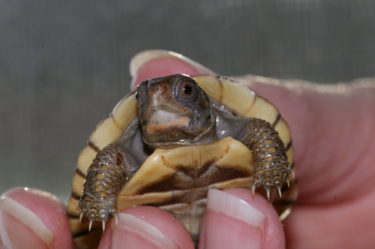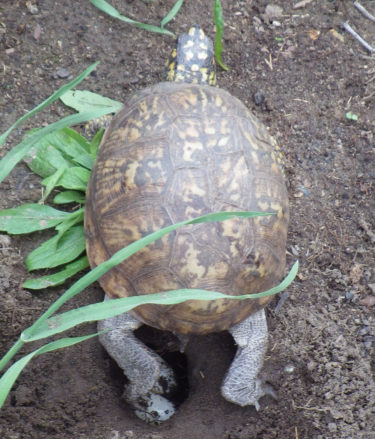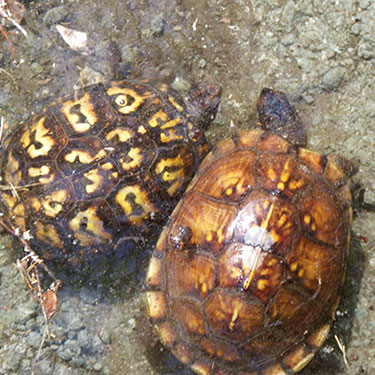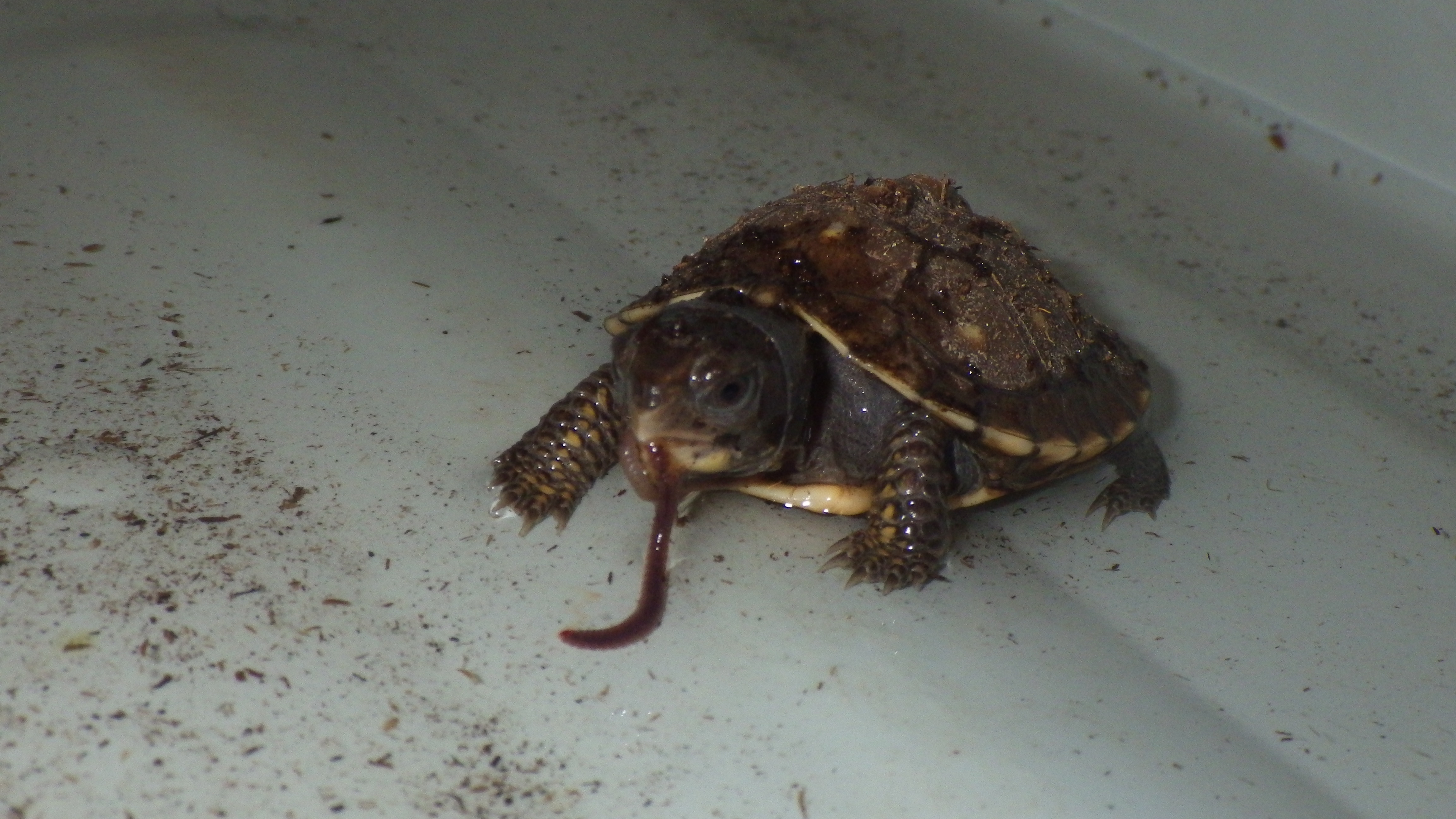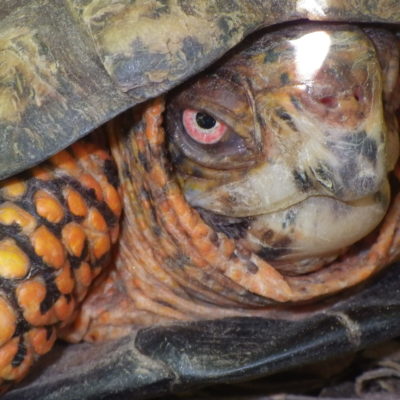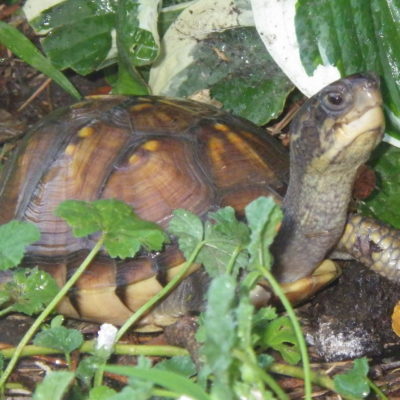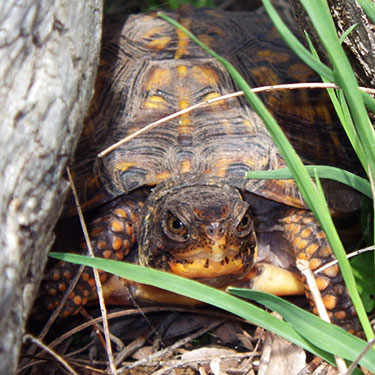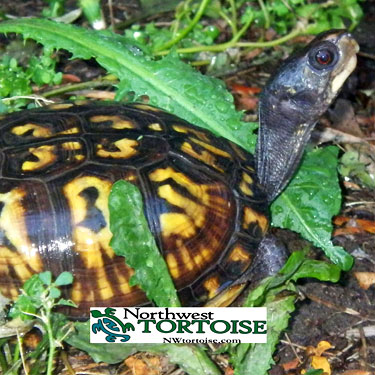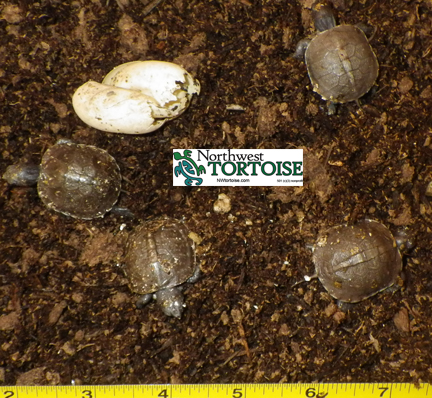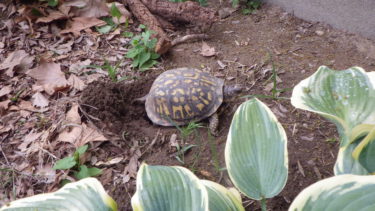General Information
**The following information is meant to give the novice keeper a BASIC place to start with the species. More information (web links, infographics, recommended books, etc.) can be found on the RESOURCES section of the website. **
11 species/subspecies of box turtle exist ranging from the midwest to the east coast of North America and south into parts of Mexico and Central America. In the pet trade the most common box turtles are: Three-toed Box Turtle (Terrapene Carolina triunguis), Ornate Box Turtle (Terrapene ornata ornate), Eastern Box Turtle (Terrapene Carolina Carolina), Florida Box Turtle (Terrapene carolina bauri) and the Gulf Coast Box Turtle (Terrapene Carolina major).
Eastern Box turtles are very popular because of the variety of individual colors, small size (one to two pounds) and resilience in captive situations. Box Turtles are as comfortable in water as they are on land – hence the SUV of turtles! Additionally, they have the ability to bend and turn their heads making them appear more expressive. Box turtles are visually orientated and make excellent hunters.
The Eastern Box Turtle (Terrapene carolina carolina)
Eastern box turtles (EBTs) are native to the eastern United States from Maine to the deep south. They are characterized by high-domed carapaces (shells), and various coloration patterns including: yellow or orange streaks or blotches on their carapace and/or limbs on a brown background, and a rigid formation in the vertebral (backbone) area. Box turtles in general are so named because of the hinge located on the plastron (bottom) that allows the turtle to withdraw its head and legs completely into the shell, thus acting as a drawbridge. The hinge is so strong predators can rarely force it open, nor can humans without a crow bar!
Housing Information
EBTs are fun, intelligent and full-of-personality. They are sometimes referred to as SUV of turtles because they are as comfortable on land as they are in water. They are easier than some species to keep (if you set them up correctly!) because they are relatively small and adaptable to many weather conditions. EBTs are hunters. Providing them a place to stalk bugs, grubs, worms (pretty much anything that moves) as well as access to water is essential to their happiness.
Read the enclosure information page for basic indoor and outdoor enclosure guidelines and browse the picture gallery for ideas.
Feeding Information
Feeding your EBTs is one the most important aspects of captive keeping. In the wild EBTs eat a wide and varied range of animal matter, fungi, greens, fruits and vegetables. In captivity it is the owners responsibility to provide something from each group during feeding.
Many commercial foods are starting to appear on store shelves. None of these foods represent a complete diet. Some are detrimental to your EBTs health. Do the research to really understand and be able to provide a correct diet.
Be wary of store purchased insects and worms – Crickets, mealworms and earthworms raised for retail environments are essentially void of all nutritional merits. Earthworms are raised on and digest newspaper. Mealworms are raised on potatoes and corn meal. Again, do your own research to determine what source you’ll use. Or better yet, raise your own!


